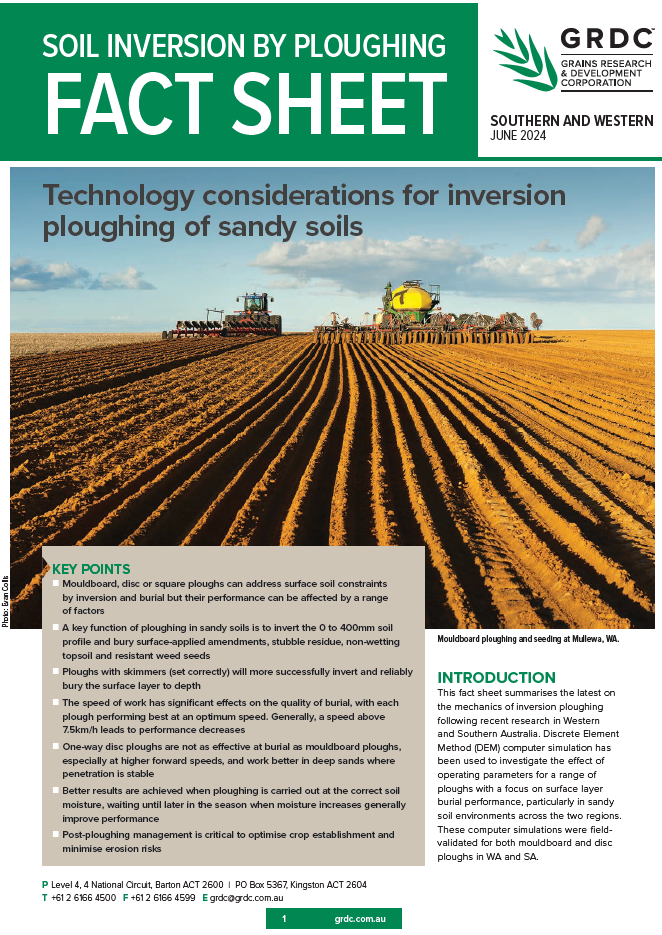Soil inversion by ploughing
Soil inversion by ploughing
Published: 17 Jun 2024
Mouldboard, disc or square ploughs can help soil quality issues, but performance can be affected by many factors.
This fact sheet considers ploughing of sandy soils, inversion ploughing principles, performance evaluation and post-ploughing management.
Key points
- Mouldboard, disc or square ploughs can help surface soil issues by turning over the soil but performance can be affected by a range of factors.
- A key function of ploughing in sandy soils is to turn over the 0 to 400mm soil profile and bury any additions to the soil, stubble residue, non-wetting topsoil and resistant weed seeds.
- Ploughs with skimmers (set correctly) will more successfully and reliably achieve this aim.
- The speed of work has significant effects on the quality of burial, with each plough performing best at an optimum speed. Generally, a speed above 7.5km/h leads to poorer results.
- One-way disc ploughs are not as effective at burial as mouldboard ploughs, especially at higher speeds, and work better in deep sands where penetration is stable.
- Better results are achieved when ploughing is carried out at the correct soil moisture, so waiting until later in the season when moisture increases generally improves performance.
- Post-ploughing management is critical to helping crop establishment and reducing erosion risks.
Download PDF
Region: South; West
GRDC Project Code: CSP1606-008RMX,

